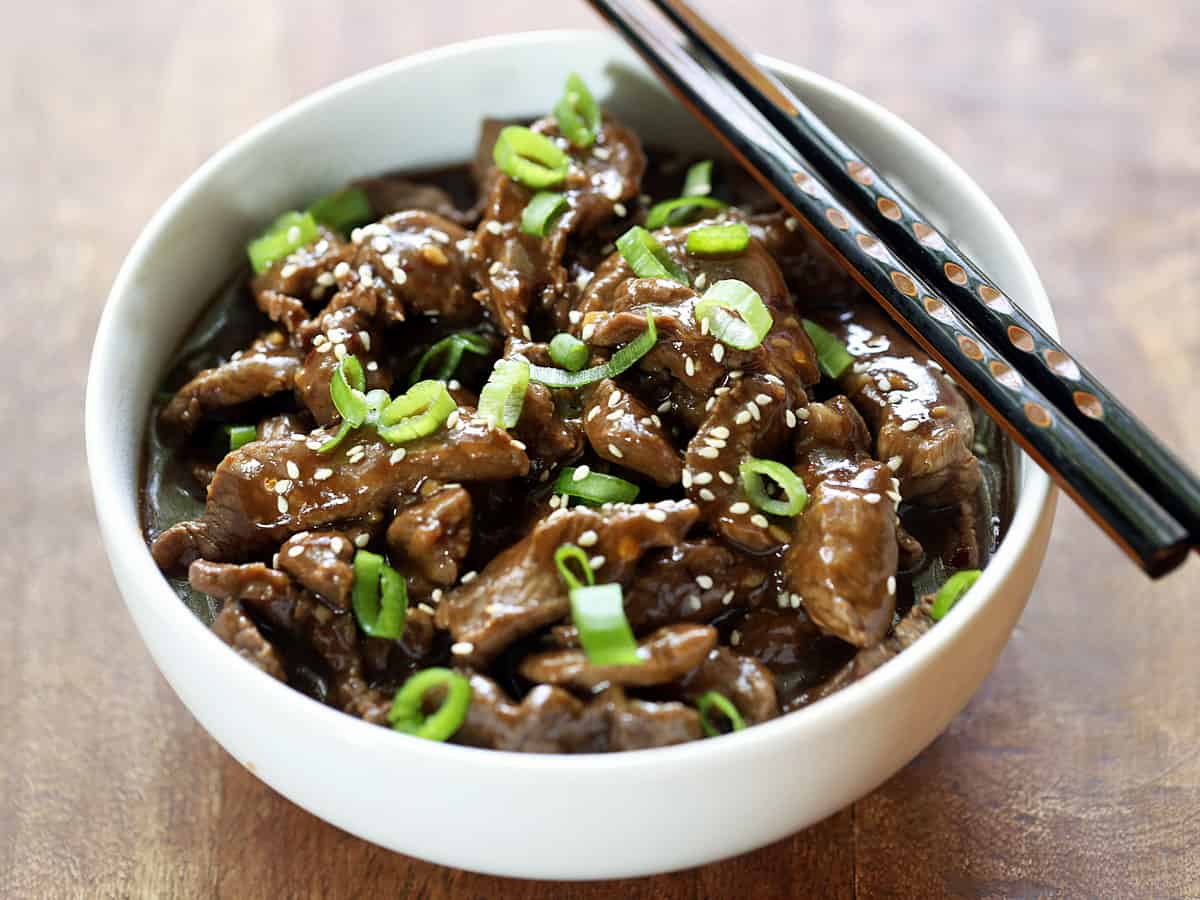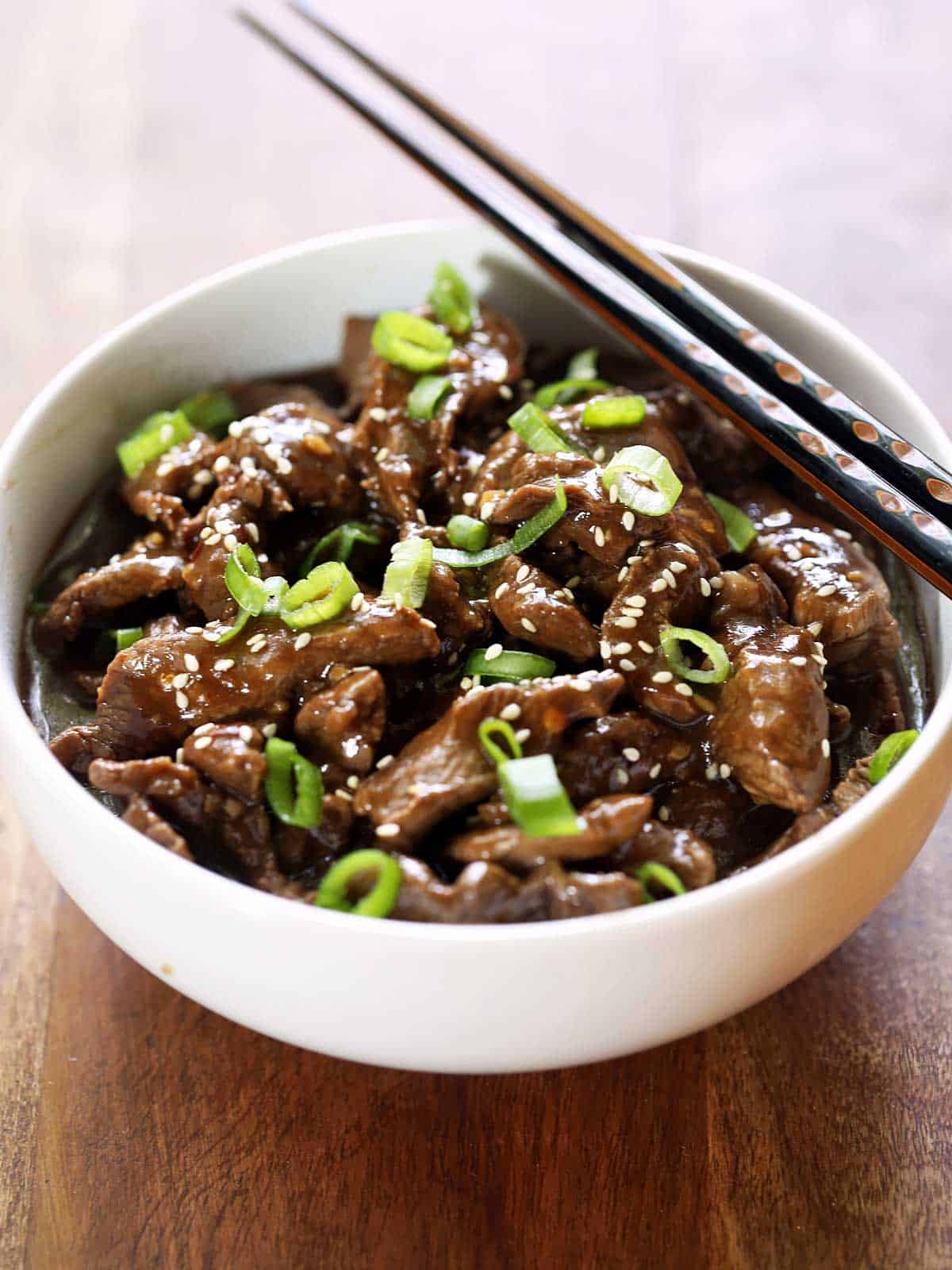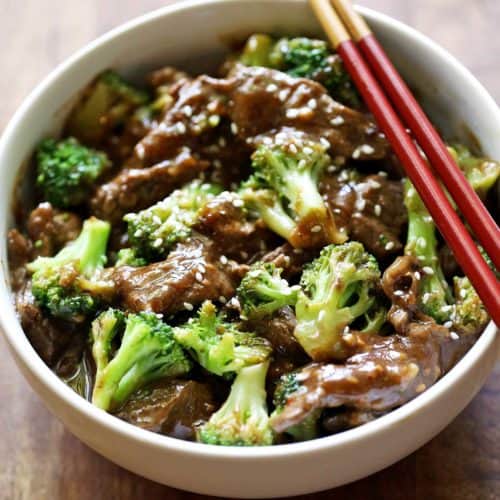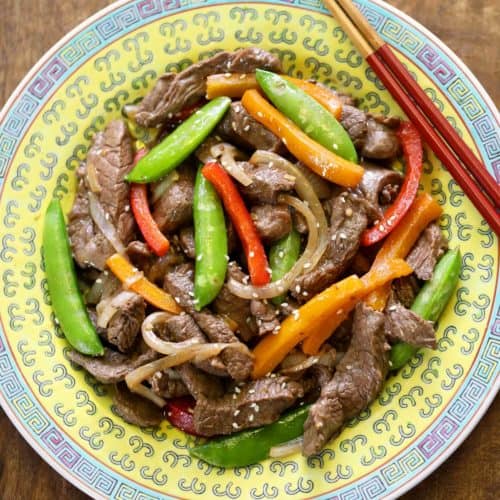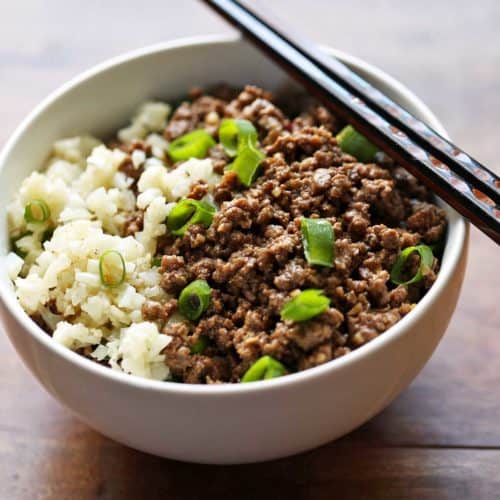There’s no need to marinate the beef! Simply stir-fry, add the tasty sauce and serve. I love the flavors of Korean cooking and make this recipe quite often, but not just because it’s so tasty. It’s also a truly easy recipe, one of the easiest and quickest in my repertoire. (Another good one, and a variation on this recipe, is Korean ground beef). I have several stir-fry recipes on this website (this steak stir fry is excellent), but most require prepping vegetables, which is fairly time-consuming. When pressed for time, I really appreciate how easy and quick this recipe is.
Ingredients
Here’s an overview of the ingredients you’ll need to make this Korean beef recipe. The exact measurements are listed in the recipe card below. Soy sauce: I use reduced-sodium soy sauce in most of my recipes. Obviously, you can use a gluten-free alternative. Honey: Adds just a touch of sweetness. Even with the honey, a serving of this recipe only has 9 grams of carbs. But you can try using a sugar-free alternative if you wish. Cornstarch: Helps to thicken the sauce without adding too many carbs, since I only use 1 tablespoon. Spices: Crushed red peppers, garlic, and ginger. Avocado oil: I like using this neutral-tasting cooking oil that has a high smoke point. Top sirloin: You can splurge and use beef tenderloin, which is more tender but also more expensive. But top sirloin works just fine. For garnish: Green onions, sesame seeds, and sesame oil.
Instructions
As I said, making this Korean beef recipe is truly easy. Here are the basic steps. The detailed instructions are listed in the recipe card below.
You start by whisking together a tasty sauce made with soy sauce and honey.Next, brown the beef in avocado oil, then add garlic and ginger.Add the sauce and cook until it thickens.Garnish the dish with green onions, sesame seeds, and sesame oil. Then serve!
Expert tip
To make this recipe as easy as can be, I like to use pre-sliced top sirloin (sold in trays and marked as “beef for stir fry”). Of course, it’s fine to simply buy top sirloin steaks and slice them yourself. Top sirloin is appropriate for this recipe because it’s lean, and while it’s not super tender, it’s also not overly tough. So you can get away with not marinating it. You can splurge with tenderloin, which would be very tender, but also very expensive. I almost always go with top sirloin. Do make sure, however, that you’re getting top sirloin. Bottom sirloin is tough and won’t work in this recipe.
Frequently asked questions
Variations
I love this recipe as is and almost always make it as written. But in case you’d like to vary the basic recipe, here are a few ideas for you:
Make this dish spicy by increasing the amount of crushed red peppers you use.Cook the dish in refined coconut oil or ghee instead of avocado oil.Replace the green onions with chopped chives.
Serving suggestions
Traditionally, you would serve this dish on a bed of white rice. I serve it on top of cauliflower rice which also adds a vegetable to this dish. You can also mix it into cooked shirataki noodles.
Storing leftovers
You can keep the leftovers in the fridge, in a sealed container, for 3-4 days. Reheat them gently, covered, in the microwave on 50% power. This is one of those dishes that actually keeps quite well. Just make sure you reheat it gently - you don’t want to dry out the meat.
Related recipes
👩🏻🍳 I typically publish a new or an updated recipe once a week. Want these recipes in your inbox? Subscribe! You can unsubscribe at any time.
Recipe card
❤️ Let’s connect! Follow me on Pinterest, Facebook, TikTok, YouTube, Instagram, or Twitter.
